Sarah Sundin's Blog, page 130
June 14, 2022
Today in World War II History—June 14, 1942
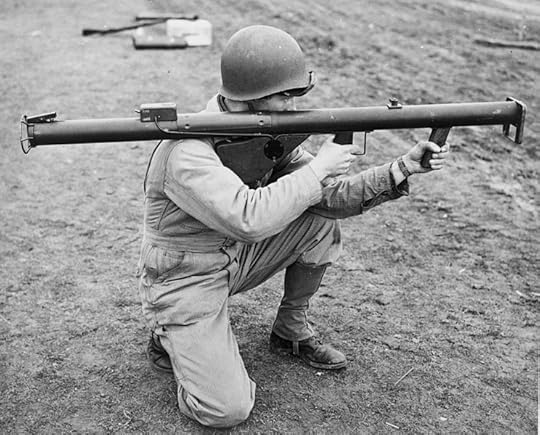
Soldier holding an M1 “Bazooka,” 1943 (Library of Congress: cph.135435)
80 Years Ago—June 14, 1942: Germans take Fort Stalin at Sevastopol, Ukraine.
First firing of a bazooka, at Bridgeport, Connecticut.
The post Today in World War II History—June 14, 1942 first appeared on Sarah Sundin.June 13, 2022
Victory Mail in World War II
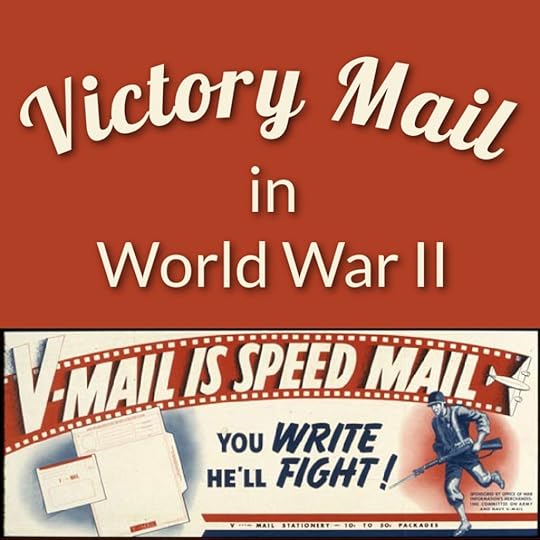 Letters in World War II
Letters in World War IIDuring World War II, letters were essential to the health of relationships. Soldiers and sailors who shipped overseas couldn’t make phone calls, and of course, e-mails and text messages hadn’t been invented. That left letters.
The average soldier wrote six letters a week. Those letters took anywhere from 1-4 weeks to cross the ocean to the United States. Each letter received at home assured loved ones that their serviceman was still alive and well when he wrote that letter. And each letter received on the front reminded that serviceman why he was fighting.
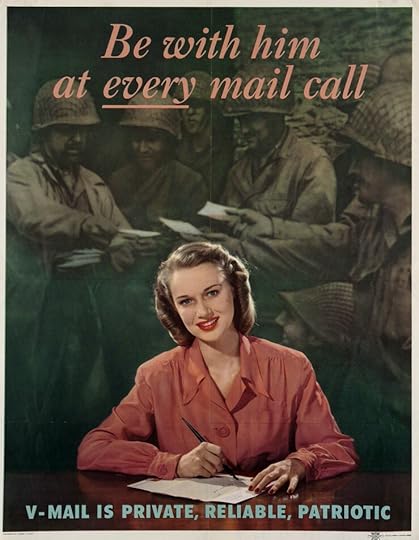
US poster, World War II
Victory MailThe US military knew letters from home were the single biggest morale booster, and a force with high morale fights better. However, mail bags took up valuable space on cargo ships and planes. For example, in 1945 the US Army handled over 2 billion pieces of mail.
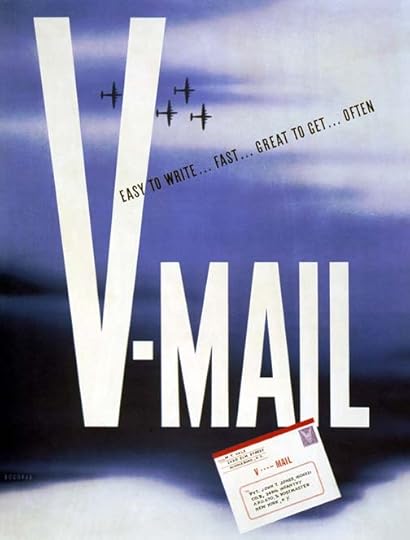
US poster encouraging use of V-Mail, World War II
The solution was Victory Mail, or V-Mail. Letters written on pre-printed forms were photographed and reproduced onto microfilm. The rolls of microfilm were transported overseas, where the letters were printed again at one-quarter size and mailed to their destination.
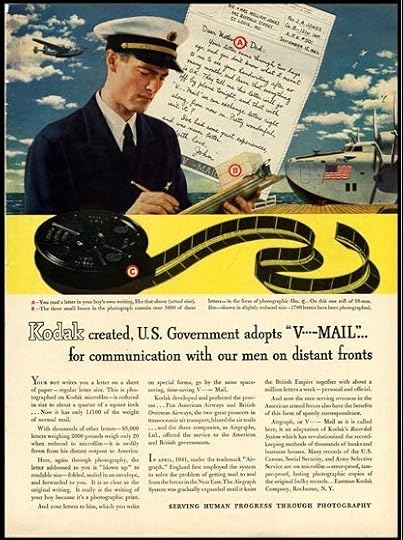
Kodak advertisement explaining how they provided the key equipment used to reduce V-Mail to 16 mm microfilm for speedy air transport, WWII
V-Mail was never mandatory, but it was successful. A letter on microfilm took up about one-thirty-seventh of the space of the same letter on paper. In the first two years of the program, the military estimated that V-Mail saved room for 5 million pounds of cargo.
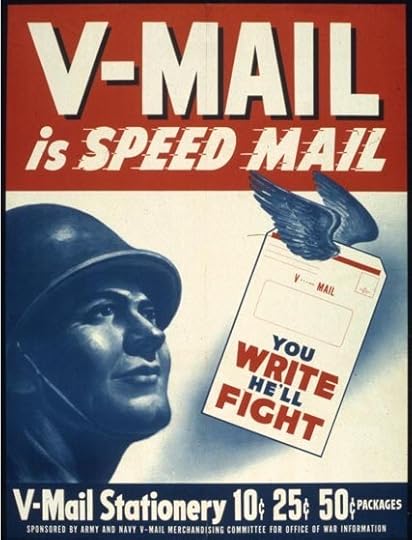
US poster promoting use of V-Mail, 1944 (US National Archives: 44-PA-1191)
V-Mail StationeryV-Mail stationery was a single page, printed front and back. The back contained instructions as well as space for return and mailing addresses. The letter was written on the front within the margins, boldly and in dark ink so it would reproduce well. Return and mailing addresses were repeated at the top. Then the form was folded in half, sealed, and sent off. (To send your own V-mail, download the forms, print on the front and back of a single sheet of paper, write your letter, and mail!)
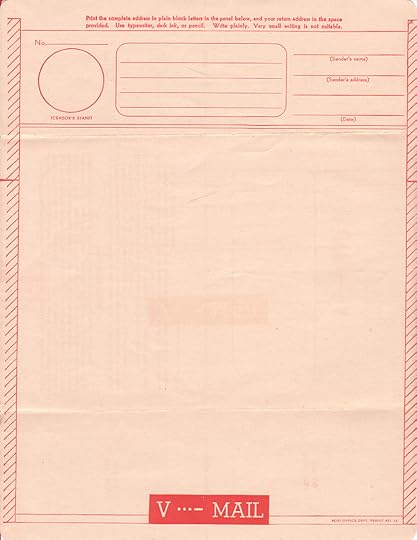
Blank V-Mail form
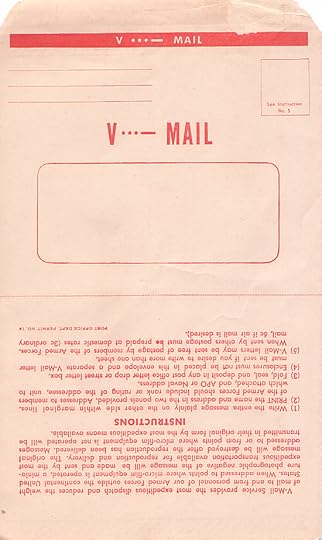
V-Mail envelope
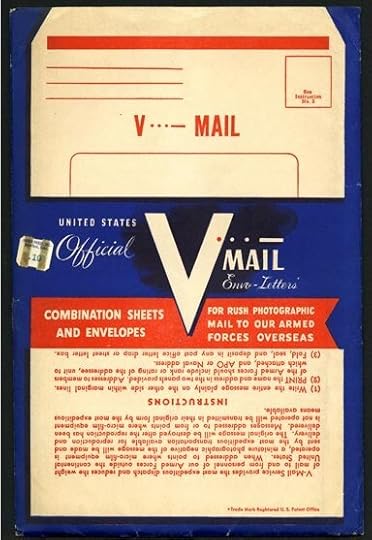
V-Mail packet with instructions for use
V-Mail ProcessingAt the V-Mail processing center, each letter was censored and photographed. The original letters were stored until confirmation was received that the shipment had been received—a nice insurance policy in case a cargo ship was sunk by a U-boat or a cargo plane went down in bad weather.
V-Mail had its disadvantages. Letters had to be short. No enclosures were possible. The scent of perfume did not photograph. And lipstick prints gummed up the scanning machines—dubbed the “Scarlet Scourge” by postal workers.
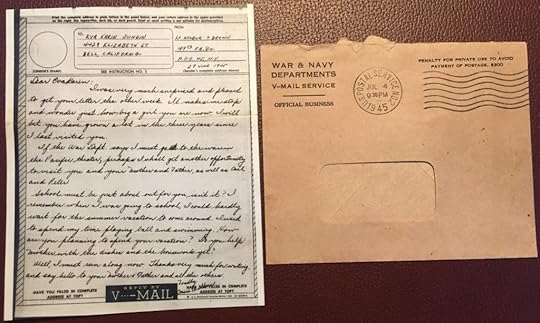
A V-Mail received by my husband’s aunt during World War II. Note smaller size in relation to envelope.
Victory mail and regular letters helped people communicate. The danger of wartime lent urgency to correspondence. No one knew if that letter was the last one they’d write or receive. Couples ofent expressed feelings usually saved for special occasions.
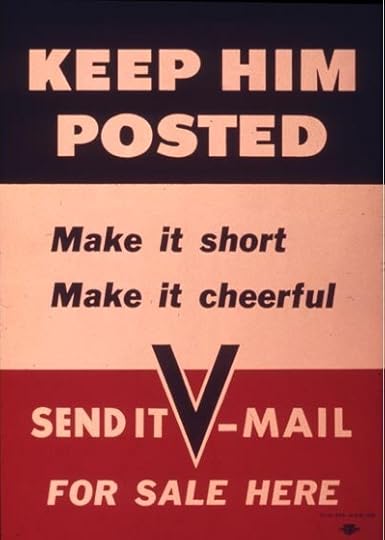
US poster encouraging use of V-Mail, World War II (US National Archives: 44-PA-1191)
My source for this post was the excellent on-line display on V-Mail at the Smithsonian Postal Museum
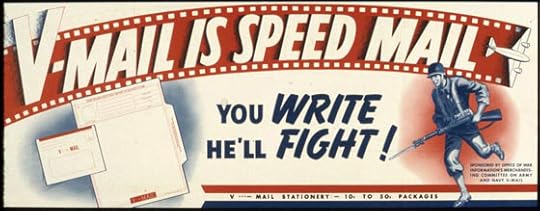
US poster promoting V-Mail, WWII (US National Archives: 44-PA-2251B)
The post Victory Mail in World War II first appeared on Sarah Sundin.Today in World War II History—June 13, 1942
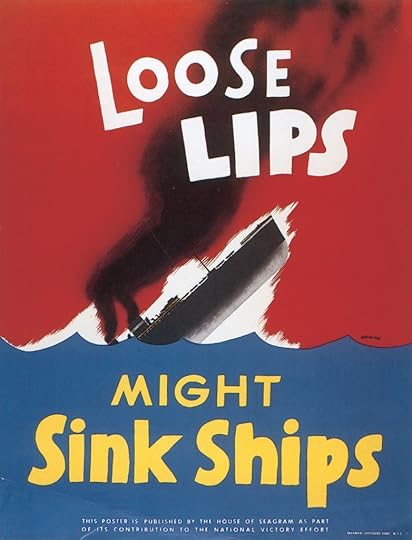
US poster, World War II
80 Years Ago—June 13, 1942: German Gen. Erwin Rommel defeats the British at Knightsbridge in Libya; heavy British casualties on “Black Saturday.”
US forms Office of Strategic Services (OSS), precursor of CIA.
US forms Office of War Information to oversee radio, movies, press, and to disseminate propaganda.
Four German saboteurs are landed by U-boat U-202 at Amagansett, Long Island, NY, just after midnight.
The post Today in World War II History—June 13, 1942 first appeared on Sarah Sundin.June 12, 2022
Today in World War II History—June 12, 1942
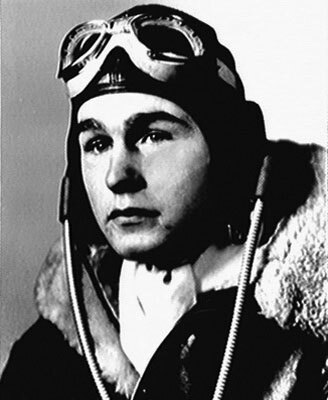
US Navy pilot Lt. George H.W. Bush, WWII (US Navy photo)
80 Years Ago—June 12, 1942: Anne Frank receives a diary for her thirteenth birthday.
On his eighteenth birthday, future president George H.W. Bush graduates from high school and enlists in the Navy, although he’d already been accepted at Yale.
US B-24 Liberator bombers flying from Egypt attack Ploesti in first US strategic mission in the European-African-Middle East Theater.
US 100th Infantry Battalion is activated, composed of Japanese-Americans from Hawaii.
Soviet 588th Night Bomber Regiment (all-female unit dubbed the “Night Witches” by the Germans) enters combat in Po-2 fighter planes.
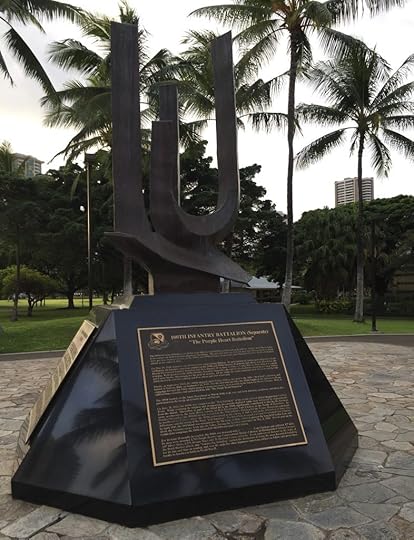
Brothers of Valor Monument in Honolulu, HI, commemorating the 100th Infantry Battalion and other Japanese-American units in World War II (Photo: Sarah Sundin, November 2016)
The post Today in World War II History—June 12, 1942 first appeared on Sarah Sundin.June 11, 2022
Today in World War II History—June 11, 1942
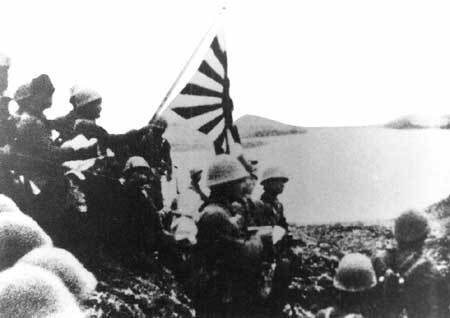
Japanese Special Naval Landing Force on Kiska in Aleutian Islands, 6 Jun 1942 (public domain via Wikipedia)
80 Years Ago—June 11, 1942: German forces under Rommel break out of siege in “The Cauldron” near Gazala, Libya, and attack near Knightsbridge.
Free French evacuate Bir Hacheim in Libya; Germans occupy the fort.
US Eleventh Air Force in Alaska begins bombing Japanese-held Kiska in the Aleutians.
US Navy aircraft discover Japanese presence on Attu in the Aleutians, and US Navy PBY Catalinas bomb those positions.
The post Today in World War II History—June 11, 1942 first appeared on Sarah Sundin.June 10, 2022
Today in World War II History—June 10, 1942

British poster commemorating Lidice, WWII
80 Years Ago—June 10, 1942: In retaliation for the assassination of SS Gen. Heydrich, the Nazis destroy the Czechoslovakian village of Lidice, killing all 173 men and deporting the children and women to concentration camps.
A British tea planter uses elephants to rescue 68 Burmese refugees fleeing the Japanese across the Daphna River, India.
US approves construction of “Big Inch” pipeline to transport crude oil from Texas to northeast states, bypassing U-boats.
The post Today in World War II History—June 10, 1942 first appeared on Sarah Sundin.June 9, 2022
Today in World War II History—June 9, 1942

US Office of War Information poster, WWII
80 Years Ago—June 9, 1942: All official Allied resistance in the Philippines is neutralized.
US and Britain agree to pool food and production resources, establishing the Combined Food Board and Combined Production and Resources Board.
The post Today in World War II History—June 9, 1942 first appeared on Sarah Sundin.June 8, 2022
Make It Do – Scrap Drives in World War II

Perhaps nothing represents the community-minded patriotism of the US Home Front in World War II better than the scrap drive.
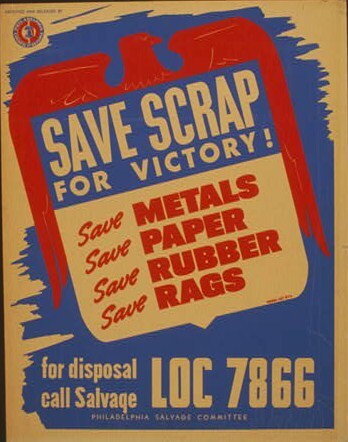
US poster, WWII
Enemy conquests cut off supplies of crucial raw materials such as tin and rubber, and the need for products made from these materials skyrocketed due to the war. Since useful materials often ended up in the trash can or languished unused in homes and on farms, the War Production Board encouraged scrap drives throughout the war.
Scrap Metal Drives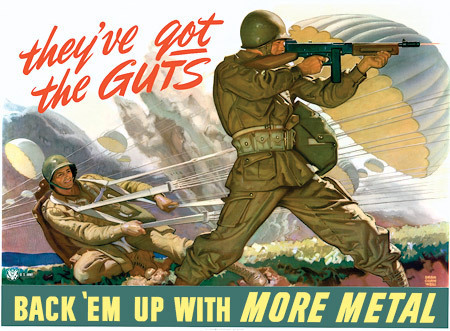
US poster encouraging conservation of metal for military purposes, WWII
Metal shortages were critical (Make It Do – Metal Shortages in World War II). On January 10, 1942, the US launched the “Salvage for Victory” program (Read more on the National World War II Museum blog). Citizens scoured their homes, farms, and businesses for metal. Housewives donated pots and pans, farmers turned in farm equipment, and children even sacrificed their metal toys. Many people removed bumpers and fenders from their cars for the war effort. Communities melted down Civil War cannons and tore down wrought iron fences, sacrificing their history for their future.
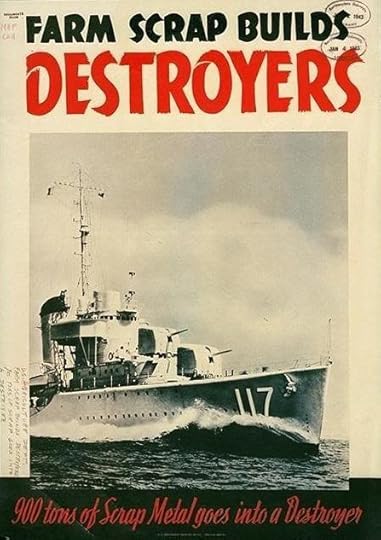
US poster encouraging salvage of farm scrap, WWII
These drives were often great community events, with performers, speeches, and opportunities to throw your scrap metal at a bust of Hitler.
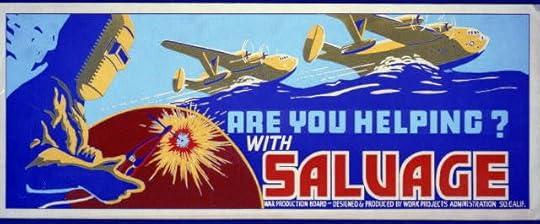
US War Production Board poster, WWII
Competitions were held to see which town, county, and state produced the most scrap, and the winners boasted of their feats. These drives had mixed results. Used aluminum was found to be useless for aircraft, but used tin, steel, and copper were easily melted down and reused.
Tin Can Drives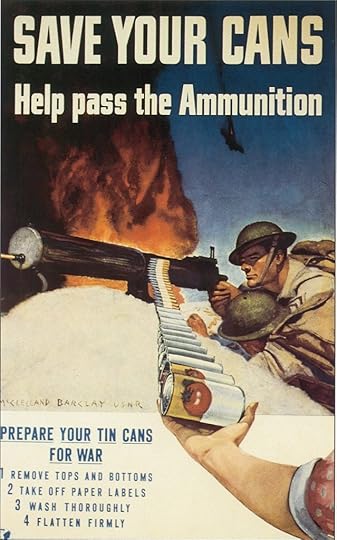
US poster encouraging tin can collection, WWII
The use of tin packaging was greatly reduced during the war, due to the use of alternative packaging materials and to rationing of canned goods. However, consumer use of tin continued throughout the war, and this irreplaceable resource needed to be recovered.
Most communities collected tin cans once a month. In some towns, people places boxes of cleaned and crushed tin cans by the curb for collection, and other towns had central collection sites. Youth groups, especially the Boy Scouts, were highly involved in these drives.
Rubber Drive
US War Production Board poster, WWII
Rubber was vital for war use, and acute shortages affected the United States from early in the war (See “Make It Do – Tire Rationing in World War II”). From June 15-30, 1942, the United States held a nationwide rubber drive. People brought in old or excess tires, raincoats, hot water bottles, boots, and floor mats. In exchange they received a penny a pound. Although 450,000 tons of scrap rubber was collected, used rubber was found to be of poor quality.
Paper Drives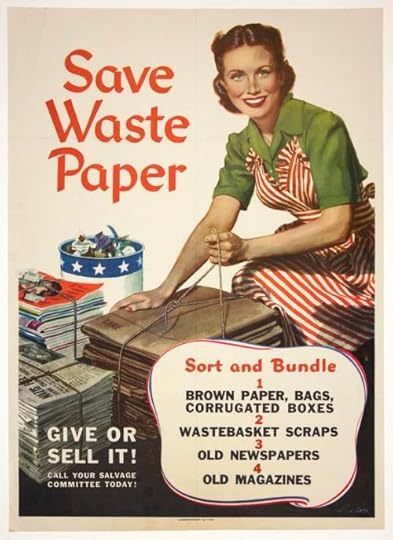
US poster, 1944 (Franklin D. Roosevelt Presidential Library & Museum: MO 2005.13.35.104)
The need for paper increased during the war. The military’s love for paperwork could be blamed, but the military also used lots of paper packaging for supplies. On the civilian side, paper packaging had replaced tin for many products.
A paper drive in mid-1942 brought in so much paper that mills were inundated and actually called for a stop. However, by 1944 an acute paper shortage existed.
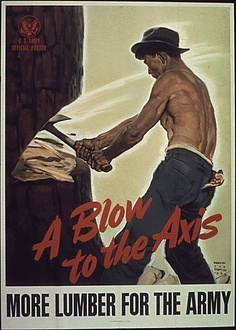
US poster, World War II
The lumber industry was hard-hit by the manpower shortage caused by the draft. Lumberjacks went on strike, demanding a higher meat ration, which they did not receive. Many of these men left for higher-paying jobs in the defense industry.
Publishers found their paper allotment cut by 15 percent. Newspapers, magazines, and books were printed on fewer pages with thinner paper and narrow margins. Paperback books had been introduced in 1939 and also allowed for less paper. However, more scrap paper was needed.
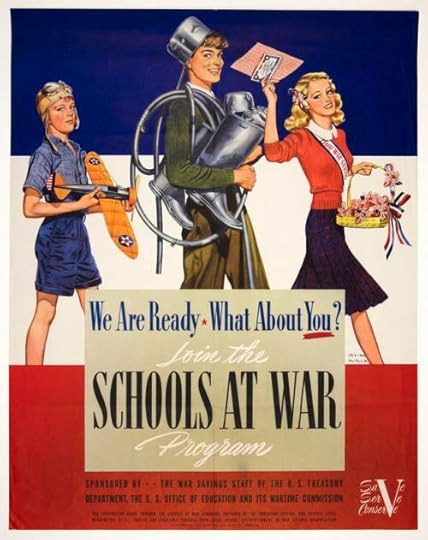
US poster, 1942 (Franklin D. Roosevelt Library & Museum: MO 2005.13.45.12.1)
The children of America stepped up. Local schools and scout groups organized regular paper drives, often coordinated with the tin can drives. The War Production Board started the Paper Troopers program, designed to sound like “paratroopers,” to involve schoolchildren in the effort. Participants received arm patches and certificates for collecting certain amounts.
ResultsScrap drives were a vital part of the American war effort. While not all scrap materials proved useful, many did and provided a small but significant source of material. Most importantly, these drives galvanized the Home Front and made each individual, even children, feel like a crucial part of the war effort.
The post Make It Do – Scrap Drives in World War II first appeared on Sarah Sundin.Today in World War II History—June 8, 1942
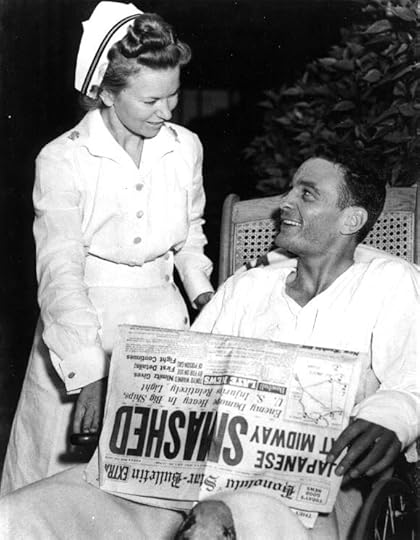
US Navy pilot Ensign George Gay, survivor of Battle of Midway, Pearl Harbor Naval Hospital, 7 Jun 1942 (US National Archives: 80-G-17678)
80 Years Ago—June 8, 1942: US Army, European Theater of Operations (ETOUSA) is formed under Maj. Gen. James Chaney, replacing USAFBI (US Army Forces in British Isles).
Due to victory at Midway, US cancels the invasion alert for the US West Coast.
Bing Crosby records “Silent Night.”
The post Today in World War II History—June 8, 1942 first appeared on Sarah Sundin.June 7, 2022
Today in World War II History—June 7, 1942
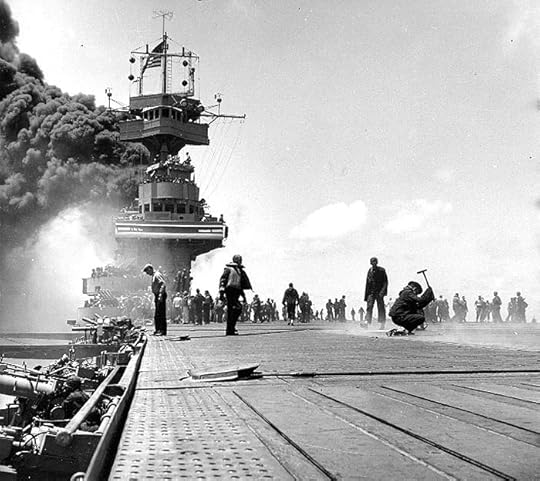
Carrier USS Yorktown burning after being hit by three Japanese bombs, 4 Jun 1942 (US National Archives: 80-G-312018)
80 Years Ago—June 7, 1942: In the Battle of Midway, carrier USS Yorktown sinks due to damage by Japanese submarine I-168 the previous day, but the US is victorious in the major turning point of the Pacific War; from now on, the Japanese will be on the defensive.
Maj. Gen. Clarence Tinker, commander of US Seventh Air Force, is killed when his plane is lost off Midway, the first Native American to reach the rank of major general and the first US general killed in WWII.
Japanese occupy Attu in the Aleutians.
In Nazi-occupied France, Jews over the age of 6 are required to wear yellow stars.
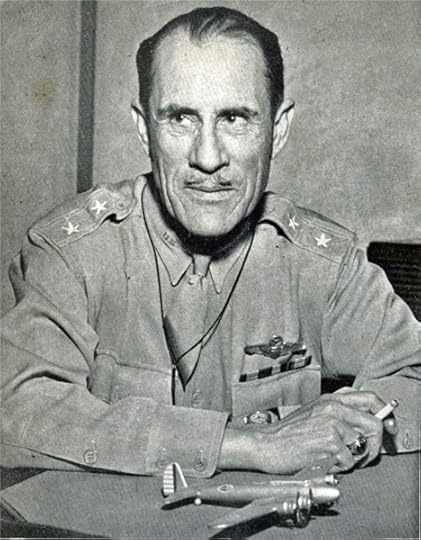
Maj. Gen. Clarence Tinker, 1942 (US War Department photo)
The post Today in World War II History—June 7, 1942 first appeared on Sarah Sundin.


